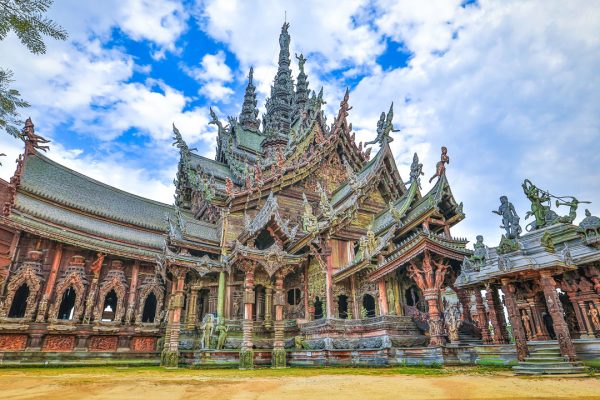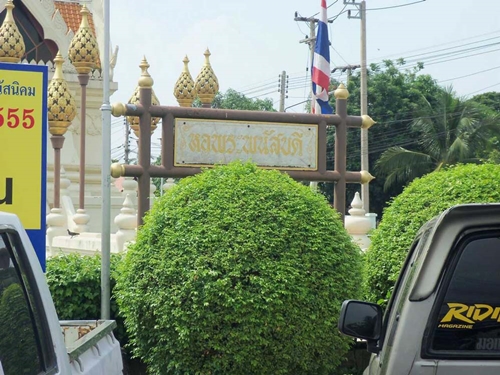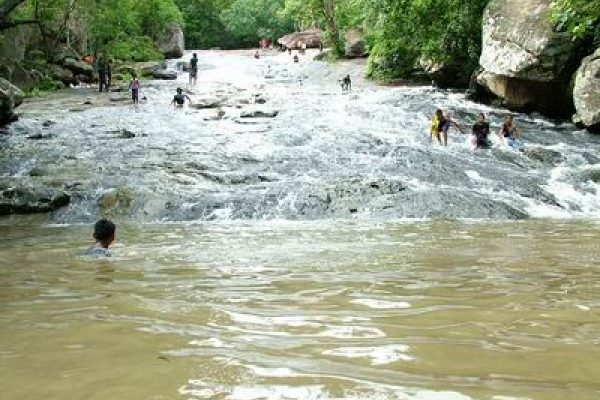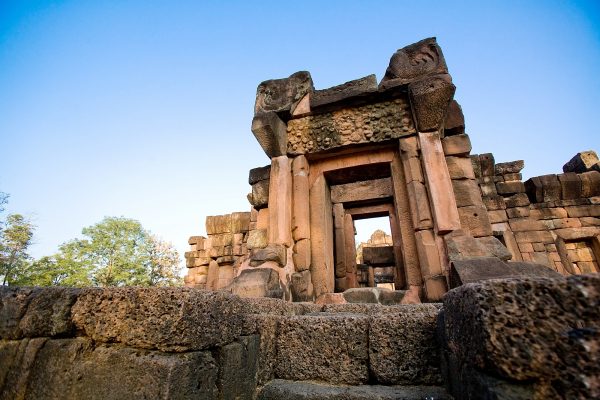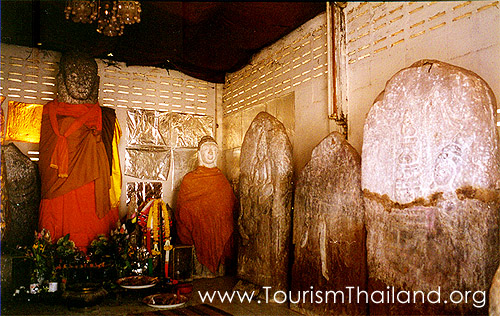
The Grand Buddha Image of the Dvaravati Period
The Grand Buddha Image of the Dvaravati Period is housed at Wat Khon Sawan in Ban Khon Sawan, Amphoe Khon Sawan. It is an ancient Buddha image which has protected Nakhon Kalong since ancient times. It is predicted that the Buddha image was built when Khmer was in power. People also believe that it is very sacred. It is a carved standing Buddha image made of laterite in Dvaravati style. A number of people in Chaiyaphum Province highly respect it and call it “Luang Por Yai.” At first, it was found on a mound; therefore people called that mound “Luang Por Yai mound.” It is assumed that the Buddha image was built when Khmer was in power in the region nearby. Later, in 1925, Khun Bancha Khadi, who was the Khon Sawan District officer at that time, collaborated with the villagers to hold the ceremony of inviting the grand Buddha image to be enshrined until now in Wat Ban Khon Sawan, Tambon Khon Sawa, Amphoe Khon Sawan where the villagers often go worshipping. The Buddha image in the Dvaravati Period (during the 12th- 16th Buddhist century) were normally inspired by Indian arts-Amaravati, Gupta, after Gupta, and Pala. Gupta art had the largest influence since it can be seen that the Buddha image was covered with neat robe without any creases and stood bending in a contrapposto style-bending the three parts of body; shoulder, hip, and legs. Later,the forms of the Buddha image were developed to be more traditional; for example, round face, connected eyebrows like the shape of bracket, flat nose, thick split lips, straight standing posture instead of contrapposto, and frequently in the attitude of giving a sermon with both hands. These forms were presented only in Dvaravati style. In addition, there found the Buddha image in the attitude of meditation, usually sitting cross-legs loosely (with right foot on top of another and only one side of the soles seen), which was affected by Amaravati style. Later, Pala style began to have an influence; for instance, the Buddha image sitting cross-legs with legs locked together (two sides of the soles are seen). During the late Dvaravati art period, there was an influence of Khmer style mixed with Dvaravati style. After that, Dvaravati style was gradually faded away and placed by Khmer style.

